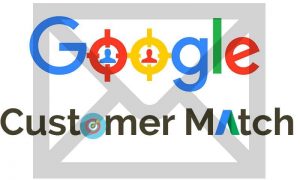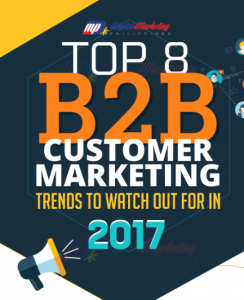There will be some cases where you can find digital products that are selling very well and that actually provide you with their sales page and even the e-mails they use. If you can find such a product then go for it. Especially if they share their conversion rate. This removes variables from your process thereby allowing you to fine tune your business model all the more quickly.
But that said, not all digital products will provide these materials meaning that sometimes you’ll still need to create your own sales page and email sequence. Likewise, there will be times when you see ways to improve the sales page you’ve received.
That’s where this section comes in: making things sell. By the end, you should know how to take your conversions from a measly 1% and boost them to a highly profitable 10%.
Writing Your Sales Script
Really though, a convincing sales page is all about your sales script. The text you use to sell your product is going to be the single biggest determining factor when it comes to your conversion rates and this is something that is highly worth taking the time to learn.
There’s a lot to this though, so bear with me while I explain the ins and outs of good persuasive writing.
Grabbing Attention
The first and biggest challenge when it comes to making sales will be to grab the attention of your visitors and to communicate that there’s something here worth reading and that they shouldn’t navigate away from the site.
The unfortunate reality these days, is that most people are in a rush all the time, have lots of work to do and don’t have time to read through large amounts of text. That means you can’t expect your audience to stick around unless you give them a very good reason. You need to grab them with a hook right away and then reel them in.
One of the best ways to do this is to give your sales page a narrative structure. This means you need to turn your pitch into a story that your audience can relate to. The reason this is so effective is that we always want to know how stories end. Have you ever started watching a trashy program late at night that you don’t care about, only to find yourself unable to look away until the very end? In such scenarios you’ll often watch for hours even though you aren’t enjoying it! This is the power of narrative and it’s a very human impulse that you can use to your advantage.
Another advantage of using a narrative is that it makes the situation more relatable. By telling people that you used to be in the same position as them, you can get them interested and at the same time you’ll be much more convincing.
This in fact is the basic structure of many a successful sales page: introduce a problem and then offer a solution. If you’re selling a book on abs, then the ‘problem’ is a lack of fitness or inability to lose weight. The solution of course is your eBook and you’re going to frame all this in a first person narrative where you discuss how you were once overweight until you found this incredible strategy that they can read about in your eBook.
Obesity, tiredness and sluggishness are one type of ‘problem’. This is an emotional and abstract problem that you can make anyone to relate to.
The other type of problem is something specific and simple. For instance, if you are selling a book on stage lighting (as we discussed earlier) then you would look for a very specific and simple problem in this niche. Perhaps people struggle to afford the stage lighting equipment they need. Maybe the lights keep falling over… I’m not an expert in this field and that’s why it’s not a niche I would choose (remember we discussed picking a field you were familiar with?).
Anyway, the point is that selling a product that answers a very specific need is always a good strategy as it simplifies your job to finding people who have that problem. This should come into play when you pick your product: find a product that solves a clear and easily defined problem.
Other things that grab attention are bold statements and rhetorical questions. Rhetorical questions work well because they force the reader to think and reflect. This means they can’t just glance over the text and not take it in, but now have to actually engage with it and think about what it means for them.
Bold statements meanwhile grab attention simply through their brazenness. This could mean that you open up with an unbelievable figure, or with a controversial claim. You can later explain yourself but initially this is a great way to get people to stop what they’re doing and to read.
Flow and Break Points
Just as you need to quickly grab attention, you also need to make sure that you hold it and don’t let go – even for a minute.
This is where flow comes in and it’s very important to make sure that your text flows smoothly and without obvious breaks. The text should be so compelling that it pulls the reader from one line to the next without giving them the time to think to leave.
This is another reason for the long narrow design that so many sales pages use – it naturally encourages flow.
The same is true with short sentences and lots of space. Ideally you want to make your content as ‘skim friendly as possible’, especially considering that most web users skim and don’t read.
You do this by spacing out your text but also by using lots of headers. In fact, it’s generally considered good practice to write your headers so that the entire narrative of the text can be discerned simply by reading the headings.
This is also a reason that sales pages will often underline and bold sections.
A massive, dense block of text will always be off putting and hard to read for someone in a hurry.
On the other hand though…
Imagine a text that spaces out its sentences…
That uses lots of bold statements…
And that engages the user with a strong narrative.
And rhetorical questions.
How much more effective might that be?
See the difference?
Another consideration when it comes to flow is maintaining the interest of your audience and ensuring that your content is never dull or boring. If you start repeating yourself, or if the quality of your writing drops, you can lose your readers. A good solution here then is to read the text through yourself and get other people to and then identify the points where you occasionally lose interest. Once you do, just fix that section by spacing it out more or using more interesting language.
Finally, you can also make sure you hold attention by directly addressing any concerns of the reader. The big problem you’re contending with here is people saying ‘yeah, but’. If they have heard your pitch before then they’ll be cynical and they won’t engage with what you’re saying. That’s why it’s your job to anticipate the problems they’ll have and then answer them before they become an issue.
That’s why you’ll often encounter the ‘I know what you’re thinking’ line:
‘I know what you’re thinking – this is just another training program that you’ll never complete! You’ve tried countless just like it right? What makes this one any different? I had the same exact though but see that’s where Brutal Ab Training is so effective. Because it works so quickly and because it’s such a fun challenge, it incredibly easy to stick to!’
Appealing to Authority and Statistics
The above paragraph would be very effective at convincing people that your product isn’t just like every other. But if you want to take it one step further, you can also reference statistics or authority figures. While we all know that statistics are remarkably easy to manipulate, this doesn’t at all prevent them from being very effective tools for persuasion.
Follow that last statement up with a statistic then and you make it much more believable and convincing. For instance:
‘Because it works so quickly and because it’s such a fun challenge, it incredibly easy to stick to! Maybe that’s why the program has a success rate of 95% across over 3,000 users!’
Equally effective would be to quote an authority in your field as this can similarly lend weight and credence to your statements. Even just quoting a user can be effective – especially as social influence plays such a big role in decision making. If you have quotes from a bunch of people singing the praises of your program, then it not only makes the program sound effective, it also makes it sound like something that’s new and exciting that ‘everyone is trying’. In turn, that greatly increases the desirability associated with it.
Value Proposition
Most important of all though when it comes to your sales page is to keep in mind your value proposition. A value proposition is essentially the thing that you are promising to do for your buyer via the product. This is what gives the product its value.
This should be at the forefront of your sales pitch because it is what will give the product you’re selling its emotional hook – and most things we buy are based on emotion rather than logic.
The old saying goes that you don’t sell a hat, you sell a warm head. It’s much easier to sell a warm head because a cold head is a problem – and a warm head is something that will make people happier and make people comfier.
Likewise, if you’re selling an eBook on fitness then you aren’t selling a book. Instead, you’re selling fitness, you’re selling confidence and you’re selling a better love life – these are all the valuable things that having abs provides you with. Selling a book on making money online? Then you’re really selling financial freedom and you’re really selling freedom from debt or money problems. You can charge a lot more for great abs and a great love life than you can for a PDF!
This is incredibly important as it is ultimately what is going to get your readers to really want your products rather than just being interested. This creates the emotion that will then lead to the snap decision to buy – as long as you’ve made your sales page look professional and you’ve provided lots of opportunities for people to click your CTA button (Call To Action button).
Creating Urgency
When you get people reading your sales page, you’re really trying to stir up a nice little ‘neurochemical cocktail’ in their brain. You want to get them to focus with your bold statements, your narrative structure and the problem you’ve outlined that needs to be solved.
You’ve then focused on the value proposition and you’ve got them imagining what life would be like with those abs, or all that money. This then creates a real sense of desire and makes the reader feel as though they must have the item that you’re promoting.
Finally, you’re going to create anxiety. The anxiety comes from the thought that the product won’t be around forever and that it’s going to disappear/go up in price. You actually have no control over whether that’s true as an affiliate but that doesn’t mean your sales page can’t vaguely allude to the idea that the product won’t be in stock forever, or that the price will likely go up in the near future. This creates ‘urgency’ and that in turn prevents the user from wanting to leave the site and ‘think about it’. You need to make sure they act now rather than later. You can do this by offering a limited time discount (some affiliate schemes give you flexibility over the pricing), or by saying there’s only limited stock and thereby creating scarcity (this also makes the product seem more popular).
Now you’ll get that knee jerk sale you’re looking for.
Removing Risk
Finally, you should also try to remove any risk associated with the product. This is important because human beings are naturally ‘loss averse’. This means that we are more motivated by avoiding loss than we are by achieving gain. So if you let someone play a game where they had a 75% change of earning $ 100 and a 25% chance of losing $ 20, they may still not play.
When we’re buying, this comes into play if we think the product might be low quality or if we think that it could be a scam. This is why you should always offer a ‘100% money back guarantee’. Better yet, consider offering a ‘try before you buy’. All the big affiliate networks offer the former while there may be ways you can provide the latter (giving away the first chapter, after checking with the product creator).
Either way, this will help you remove any reason that the reader has not to buy.
Digital & Social Articles on Business 2 Community(25)







